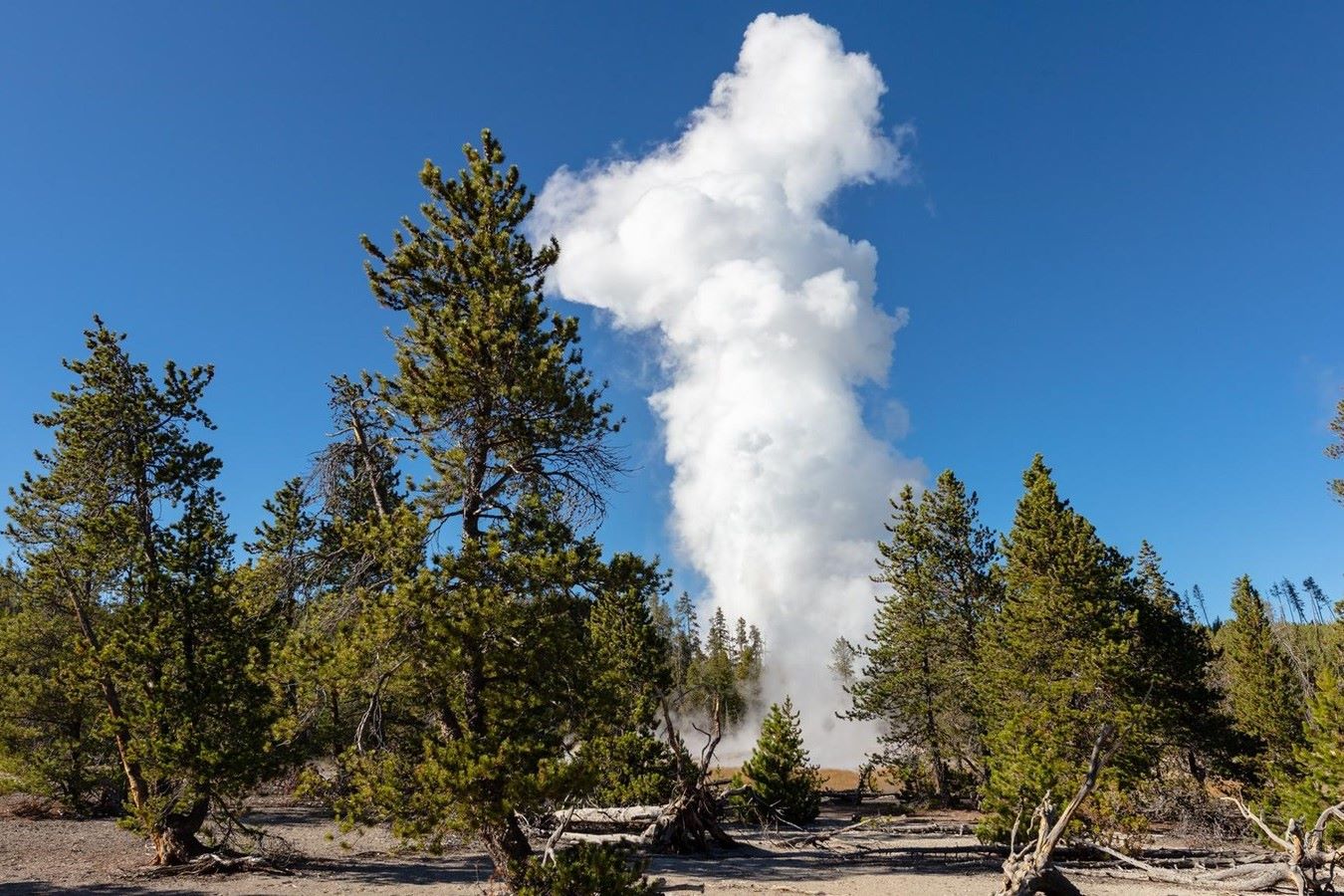
Steamboat Geyser, nestled in Yellowstone National Park, holds the title of the world's tallest active geyser. This natural wonder can shoot water up to 300 feet into the air, creating a spectacular display. But what makes Steamboat Geyser truly fascinating isn't just its height. Eruptions are unpredictable, ranging from days to years apart, keeping even the most seasoned geologists on their toes. The geyser's activity has surged in recent years, sparking curiosity and excitement among visitors and scientists alike. Want to learn more about this geothermal marvel? Here are 35 intriguing facts about Steamboat Geyser's eruptions that will blow your mind!
Key Takeaways:
- Steamboat Geyser in Yellowstone National Park is the tallest active geyser in the world, shooting water up to 300 feet. Its unpredictable eruptions and historical patterns provide valuable insights for scientists.
- Visiting Steamboat Geyser offers a unique experience, with visitors waiting for hours or days to witness its powerful eruptions. The geyser's recent activity has sparked increased interest and park attendance.
What is Steamboat Geyser?
Steamboat Geyser, located in Yellowstone National Park, is the tallest active geyser in the world. Known for its powerful eruptions, it has fascinated scientists and visitors alike. Here are some intriguing facts about this natural wonder.
- Steamboat Geyser can shoot water up to 300 feet into the air, making it the tallest active geyser on Earth.
- Unlike Old Faithful, Steamboat Geyser's eruptions are unpredictable, with intervals ranging from days to years.
- The geyser is located in the Norris Geyser Basin, one of the hottest and most dynamic thermal areas in Yellowstone.
- Steamboat's eruptions are divided into two phases: the water phase and the steam phase.
- During the water phase, the geyser expels thousands of gallons of boiling water.
- The steam phase can last for several hours, producing a loud roaring sound.
- The geyser's eruptions can cause minor earthquakes due to the immense pressure release.
- Steamboat Geyser's eruptions can be heard from miles away.
- The geyser's activity is monitored by the Yellowstone Volcano Observatory.
- Steamboat Geyser's eruptions can affect nearby geothermal features, altering their behavior.
Historical Eruptions of Steamboat Geyser
Steamboat Geyser has a long history of eruptions, some of which have been well-documented. Here are some notable historical eruptions.
- The first recorded eruption of Steamboat Geyser was in 1878.
- In 1964, Steamboat Geyser had a series of powerful eruptions, drawing significant attention.
- The geyser was dormant from 1911 to 1961, a period of 50 years without any major eruptions.
- In 1982, Steamboat Geyser erupted 11 times, the most in a single year until recent years.
- The geyser had another dormant period from 1984 to 2018, lasting 34 years.
- In 2018, Steamboat Geyser reactivated, surprising scientists and visitors.
- Since 2018, the geyser has been more active, with multiple eruptions each year.
- The 2019 eruption cycle was one of the most active in recorded history, with 48 eruptions.
- Steamboat Geyser's eruptions in 2020 continued to break records, with 48 eruptions again.
- The geyser's recent activity has provided valuable data for scientists studying geothermal systems.
The Science Behind Steamboat Geyser
Understanding the science behind Steamboat Geyser's eruptions helps explain its unique behavior. Here are some scientific insights.
- Steamboat Geyser's eruptions are driven by the buildup of steam pressure in underground chambers.
- The geyser's plumbing system is complex, with multiple channels and reservoirs.
- Changes in groundwater levels can influence the geyser's activity.
- Seismic activity in the Norris Geyser Basin can trigger eruptions.
- The chemical composition of the geyser's water includes silica, which can clog its channels.
- Steamboat Geyser's eruptions release large amounts of heat and energy.
- The geyser's steam phase can reach temperatures of up to 350 degrees Fahrenheit.
- Scientists use seismographs and temperature sensors to monitor the geyser's activity.
- The geyser's eruptions can provide insights into the behavior of other geothermal features.
- Studying Steamboat Geyser helps scientists understand the dynamics of Yellowstone's volcanic system.
Visitor Experience at Steamboat Geyser
Visiting Steamboat Geyser offers a unique experience for those lucky enough to witness an eruption. Here are some facts about the visitor experience.
- The Norris Geyser Basin, where Steamboat Geyser is located, has boardwalks for safe viewing.
- Visitors often wait for hours or even days in hopes of seeing an eruption.
- The geyser's eruptions can be unpredictable, making each visit unique.
- Witnessing a Steamboat Geyser eruption is considered a once-in-a-lifetime experience.
- The geyser's recent activity has increased visitor interest and park attendance.
Steamboat Geyser's Unique Wonders
Steamboat Geyser, the world's tallest active geyser, offers a fascinating glimpse into nature's raw power. Its unpredictable eruptions, sometimes reaching heights of 300 feet, captivate visitors and scientists alike. The geyser's activity is influenced by underground water reservoirs and geothermal heat, making each eruption a unique event.
Yellowstone National Park, home to Steamboat Geyser, provides a stunning backdrop for this natural marvel. The park's diverse geothermal features, including hot springs and mud pots, add to the allure of Steamboat's eruptions.
Understanding Steamboat Geyser's behavior helps researchers learn more about geothermal activity and Earth's inner workings. This knowledge can contribute to advancements in geothermal energy and natural disaster prediction.
Next time you visit Yellowstone, keep an eye out for Steamboat Geyser. Witnessing its eruption is a once-in-a-lifetime experience that showcases the incredible forces shaping our planet.
Frequently Asked Questions
Was this page helpful?
Our commitment to delivering trustworthy and engaging content is at the heart of what we do. Each fact on our site is contributed by real users like you, bringing a wealth of diverse insights and information. To ensure the highest standards of accuracy and reliability, our dedicated editors meticulously review each submission. This process guarantees that the facts we share are not only fascinating but also credible. Trust in our commitment to quality and authenticity as you explore and learn with us.
